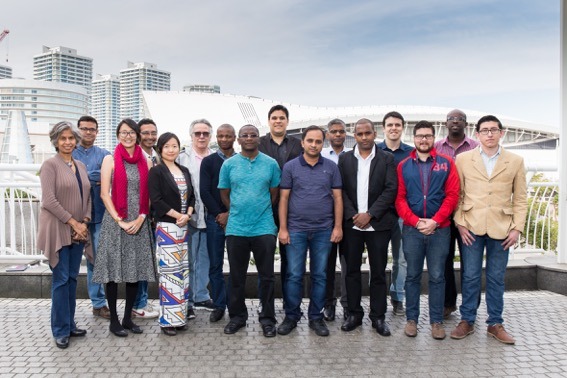Independent, volunteer-based, technical communities are vital to the success of the IETF, and to the bottom-up, collaborative fabric of the Internet ecosystem. These communities of practice serve as important forums for knowledge exchange, resource sharing, skill development, relationship building and networking.
While quite prevalent in developed countries, there is still quite a lot of work to be done to create extended local and regional technical communities in emerging economies. The manner in which these communities emerge and evolve; how they are managed; and how they support local and regional (as well as international) collaboration, is critical to the strengthening and sustainability of the IETF, and to increasing awareness and participation in its work from individuals in developing countries.
The Internet Society serves diverse technical communities by continuously enhancing its activities related to open Internet standards (OIS). To date, the organization has supported over 200 technologists, engineers, and researchers from Europe, Africa, Asia-Pacific and Latin America & the Caribbean to attend IETF meetings. The regional bureaus have fostered a vibrant network of remote hubs that engage with the IETF community in a number of ways.
The IETF in LAC initiative has served as a key impetus to bringing the first IETF to Latin America. The African Bureau is also building off the IETF in LAC model with the objective of bringing the IETF to the continent. The Kolkata Chapter has partnered with the Government of India on the India IETF Capacity Building (IICB) Program, which is geared towards increasing the participation of Indians and the engagement of corporations in the work of the IETF. As a result, communities of practice are popping up all across the world. But to accomplish this, there have been some critical success factors. Let’s discuss what they are.
Finding Common Ground
The first one is finding a way to connect different groups of people regardless of their background to a common ground. The biggest thing we see in the IETF are people forming groups and communities around passions that many of them identify with. Their need for and love of the open Internet has been at the core of our burgeoning communities. For them, the Internet is an indispensable platform, and one around which their interests are galvanized.
Let’s Come Together in the Same Place
Secondly, no one can discount that remote participation is important. But nothing can aptly replace face-to-face interactions. When it comes to engaging a community, you cannot rely solely on online platforms. Getting people to come and shake hands with the person next to them has been more beneficial than any advice or guidance they receive online. For example, there are currently around 20 Remote Hubs in Latin America and 26 in India, and with many of them being led by past Fellows to the IETF. This demonstrates why Remote Hubs and the Fellowship to the IETF have been so essential to the growth of our communities.
It’s the Content
Content is another significant component in the overall mix. Our communities look to us to provide timely and relevant content on the issues that matter to them. Whether it takes the form of web site updates, online courses and tutorials, Deploy360 resources, or policy briefs, our constituents view us as a trusted source for Internet-related content. This is how they become informed and empowered to act (and to increase their participation in OIS activities).
Leveraging Social Media
Effective community leadership requires constant creation/sharing of quality content and connecting with people online. Online engagement is of paramount importance — Frequent updates on ISOC activities, generation of new content, timely responses to questions from our community, and features on our influencers and programme alumni are just a few components of the overall social media strategy. This is how we build connections and ignite change. And we want to keep these conversations going!
So to recap, key success factors for sustainable, successful tech communities:
- Find a shared passion
- Create consistent face-to-face opportunities
- Delivery consistent, useful online content
- Use social media to engage with your community around a shared passion
- Did I mention consistency?
Finally, we would like to congratulate the Fellows to IETF 95. You can view their bio profiles here.
Once again, we have another dynamic group of young professionals who will be attending the Buenos Aires meeting. We are looking forward to an exciting and productive week with them. They are our next wave of advocates and ambassadors who will strengthen and build new communities going forward.
